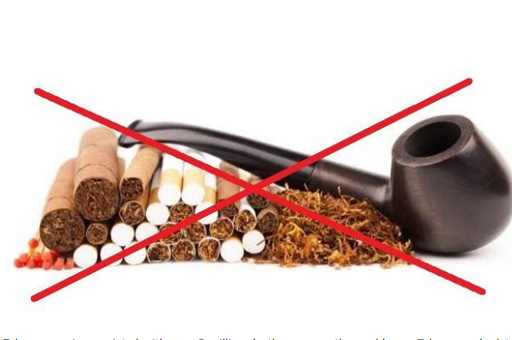Tobacco De addiction
Tobacco use is associated with over 5 million deaths per year the world over. Tobacco and
related products are
considered as one of the leading causes of early death. Tobacco is available in various smoke
and smokeless forms. The
smoke forms include cigarettes, pipes, bidis, cigar, hookah etc. Smokeless tobacco includes
dipping tobacco, chewing
tobacco, snuff, guthka etc.
Tobacco causes harm in two ways- Firstly tobacco contains carcinogens or cancer causing agents;
secondly it contains
nicotine, a chemical that causes addiction to the tobacco. Nicotine produces physical and
mood-altering effects in your
brain that are temporarily euphoric. These effects make you want to use tobacco and lead to
dependence. When such a
person tries to stop using tobacco, he/she experiences withdrawal symptoms, including
irritability and anxiety. Thus
many persons who use tobacco fall prey to this vicious cycle and become addicts, in spite of
knowing the ill effects.
Use of tobacco products harms every organ of your body and lower your body’s immune system.
Tobacco and related products cause various Pre-cancerous lesions and conditions such as Ulcers,
red and/or white
patches, oral submucous fibrosis etc. They also decrease mouth opening, alter salivation and
taste sensation and cause
burning sensation in the mouth even on eating normal food. All this eventually leads to oral
cancer. Smoke forms of
tobacco also cause respiratory diseases
Such as COPD, asthma and lung cancer. Smoking is a major cause of cancers of the oesophagus,
larynx, throat (pharynx)
and mouth and is related to cancers of the bladder, pancreas, kidney and cervix, and some blood
cancers. Smoking just
one to four cigarettes daily increases your risk of developing heart disease and dying from it.
Smoking also worsens
health in diabetic patients and those with diseases of the eyes. Infertility & impotence is also
a complication of
smoking. Mothers who smoke during pregnancy are more prone to risk of miscarriage, preterm
delivery, lower birth weight
and sudden infant death syndrome (SIDS) in their babies. The chemicals in tobacco smoke causing
premature aging and
wrinkles, yellowing of teeth, fingers and fingernails. The worst part about smoking is that it
not only affects the
person doing it, but also affects the health of people who are around smokers for long
durations.

Irrespective of the amount of tobacco you use, you can become nicotine dependent. Following signs may indicate that you are addicted to tobacco:
You are unable to quit tobacco in spite of making sincere efforts in the past.
You experience withdrawal symptoms (cravings, anxiety, irritability, restlessness, difficulty concentrating, depression, frustration, increased appetite, sleeplessness, constipation or diarrhoea) when you try to quit.
You continue the use of tobacco despite being diagnosed with health problems.
In order to fulfil your tobacco craving you set out a special routine for it. You prioritize your tobacco craving over other activities
When to see a doctor
Regardless of how long you've used tobacco, quitting can significantly improve your health. Medical advances now provide effective treatments for nicotine dependence to help you manage withdrawal and quit for good. Ask your doctor to help formulate a personalised treatment plan that takes care of physical and behavioural aspects of nicotine dependence. Supervised medical therapy along with a supportive Tobacco De-addiction specialist will significantly help you quit your habit.